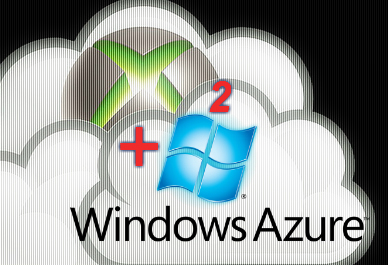 NEWS
NEWS
 NEWS
NEWS
 NEWS
NEWS
![]() Going a bit deeper on a possible upcoming Xbox that operates on the cloud, you have to look at some rather public, yet probably under-analyzed aspects of Microsoft’s past, present and future. In this second report, we are looking at cues from development news, some leaked details, and the establishment of a new feature-rich dynamic enterprise product to formulate the direction that the Xbox is taking. To start, it’s no secret that PC sales are facing a general decline and giving way to tablets and smartphone devices, at least in the consumer market. Yet Microsoft has recently made a full-on play into the tablet space with their upcoming Surface products. One report said there were some 3 Million Surface tablets slated to be built by the end of this year. The development of that product is of course closely tied to the development of the Windows 8 operating system. When you look a little deeper, and look at the overall product suite on deck, the pieces really start to come together and draw a picture of the brilliant play by Microsoft that could be in store, affecting not only the Xbox, but VDI, and Windows Azure.
Going a bit deeper on a possible upcoming Xbox that operates on the cloud, you have to look at some rather public, yet probably under-analyzed aspects of Microsoft’s past, present and future. In this second report, we are looking at cues from development news, some leaked details, and the establishment of a new feature-rich dynamic enterprise product to formulate the direction that the Xbox is taking. To start, it’s no secret that PC sales are facing a general decline and giving way to tablets and smartphone devices, at least in the consumer market. Yet Microsoft has recently made a full-on play into the tablet space with their upcoming Surface products. One report said there were some 3 Million Surface tablets slated to be built by the end of this year. The development of that product is of course closely tied to the development of the Windows 8 operating system. When you look a little deeper, and look at the overall product suite on deck, the pieces really start to come together and draw a picture of the brilliant play by Microsoft that could be in store, affecting not only the Xbox, but VDI, and Windows Azure.
Back in January of 2008, Microsoft acquired a company called Calista Technologies. The startup company had specialized in remote desktop technologies, with features like full-fidelity video, audio, and media capabilities. Today that technology exists as an extension to Microsoft’s Remote Desktop Protocol (RDP) as of Windows Server 2008 R2 SP1. The footprint of the client device in RemoteFX decoding is minimal, while server requirements on the host side are pretty high. This all makes for a very ideal VDI infrastructure, to say the least and a number of improvements have been made along the way to make that a better prospect such as better WAN performance in Windows Server 2012. Anyway, that’s all fine and dandy, but to show you how serious Microsoft is about this technology, back in June they announced RemoteFX as the “Umbrella Brand” that covers all their VDI technologies including WAN or LAN connection-based scenarios. VDI for Windows is territory already covered by established technologies from VMware and Citrix, just to name a couple.
RemoteFX has features that allow dynamic graphics that are tied to factors such CPU utilization, network type and conditions, runtime conditions, and graphics utilization. The technology currently has other desirable VDI features such as USB redirection, a video codec that doesn’t require any additional hardware, and mutli-touch interactions. Full multi-touch and gesture support for tablets is a powerful offering. So what we are looking at here is a full-on high-performance VDI solution straight out of the Windows Server 2012 box. Stop and think about that for a second. There are endless opportunities and ways this could go.
How this ties to Xbox is interesting, recently what was described as a “Microsoft Xbox Durango Development Kit” was sold by a reputable source on Ebay for about $20,000 (link to the Ebay auction has been removed). Durango is the official Microsoft codename for their next-gen Xbox. There was much buzz about what this alleged development system truly represents. Screenshots indicated an inextricable connection to Windows 8 and it is theorized that the next Xbox will run on a version of new OS. So think about that, you have a forthcoming game platform that has the potential capability to act a low-resource requirement VDI infrastructure. If you think that what I’m saying is a stretch, consider that within the existing Xbox 360 Windows Media Center, RDP is already the mechanism through which this works. So hopefully to you readers, this is starting to come together. Don’t worry, we’ll tie it all together.
So to review, you have a new Windows 8 product that features what we were all up until recently calling the “Metro” interface (that developer version name has been nixed by MS, but I’ll use it here), a common underlying structure for “Metro” apps that makes for simple porting to Xbox, a potential Windows 8-based Xbox update, a powerful new VDI offering in the next generation Windows Server 2012 product, and continued integration of Xbox Live in all facets of Microsoft’s products, be it Surface products, the Xbox itself, or Windows 8. It’s pretty clear that the next Xbox will be way beyond a media/gaming system. In fact it appears that the product will revolutionary in its capabilities, which we will do our best here to project what that might look like.
Next stop: We’ll talk about Dave Cutler, the primary developer of VMS, Windows NT, and yes – Windows Azure. Dave Cutler is now working in a still unpublicized role on the Microsoft Xbox team.
THANK YOU